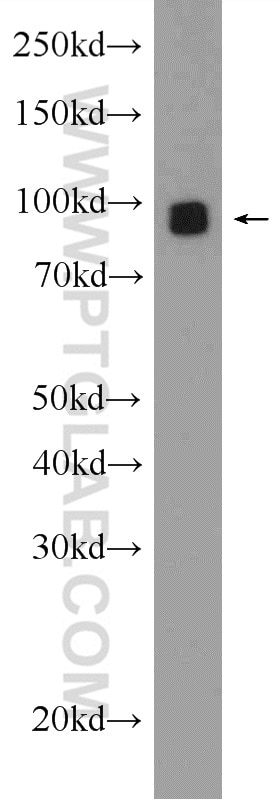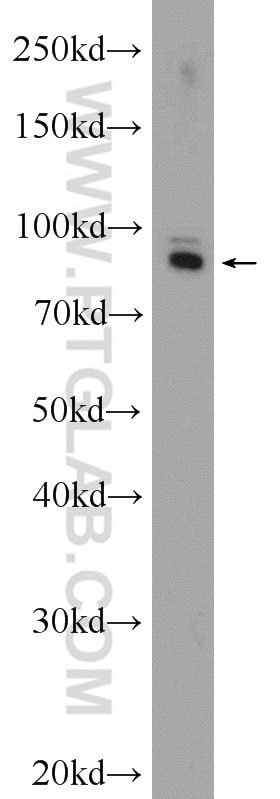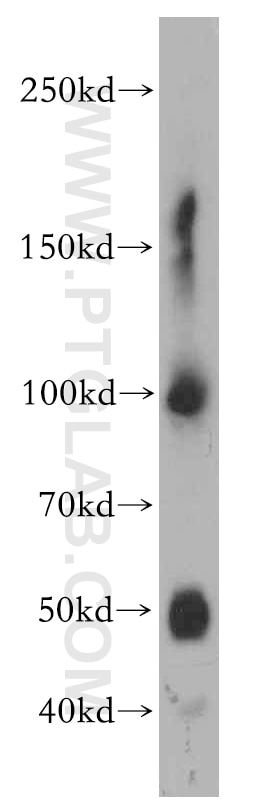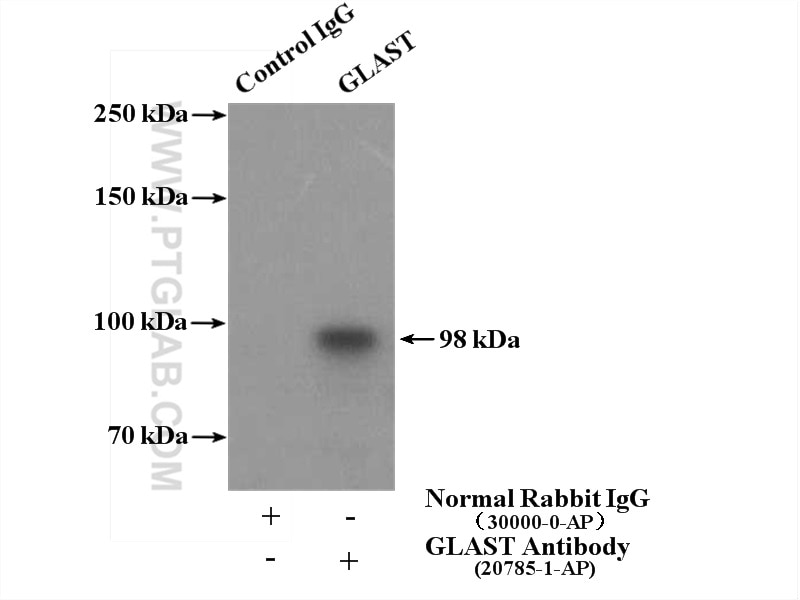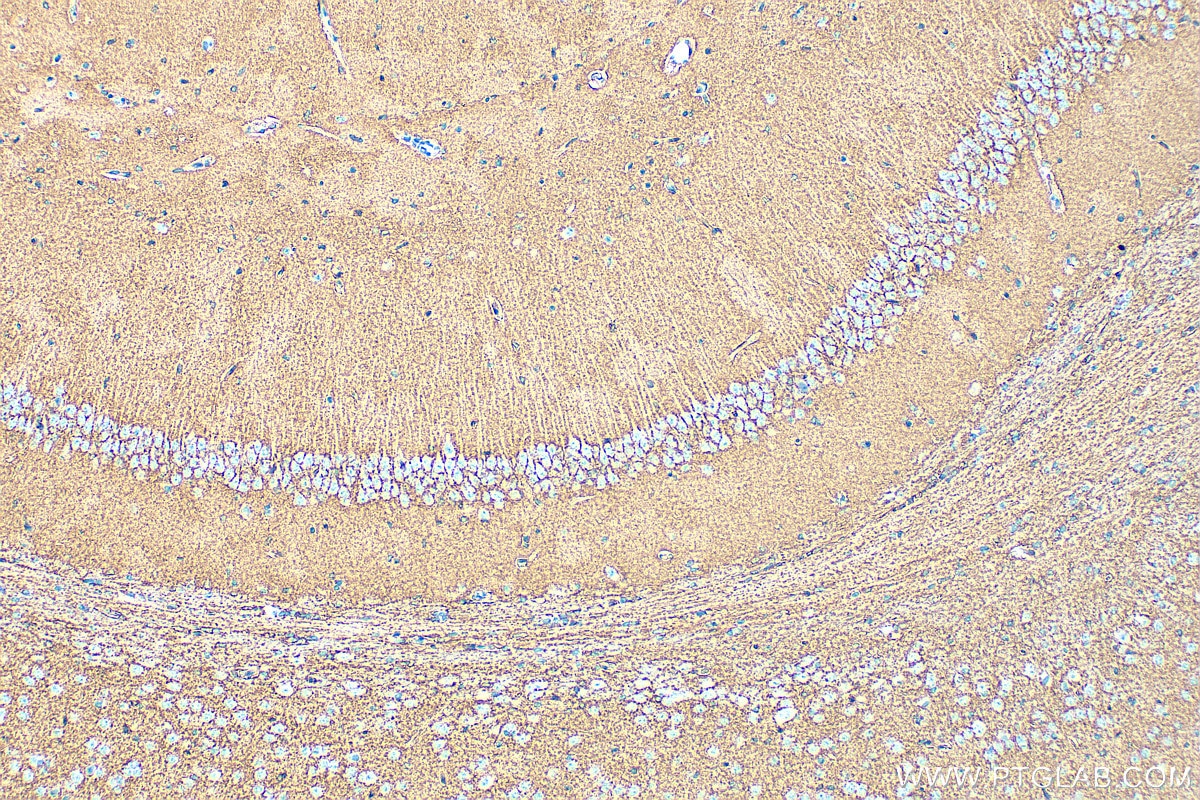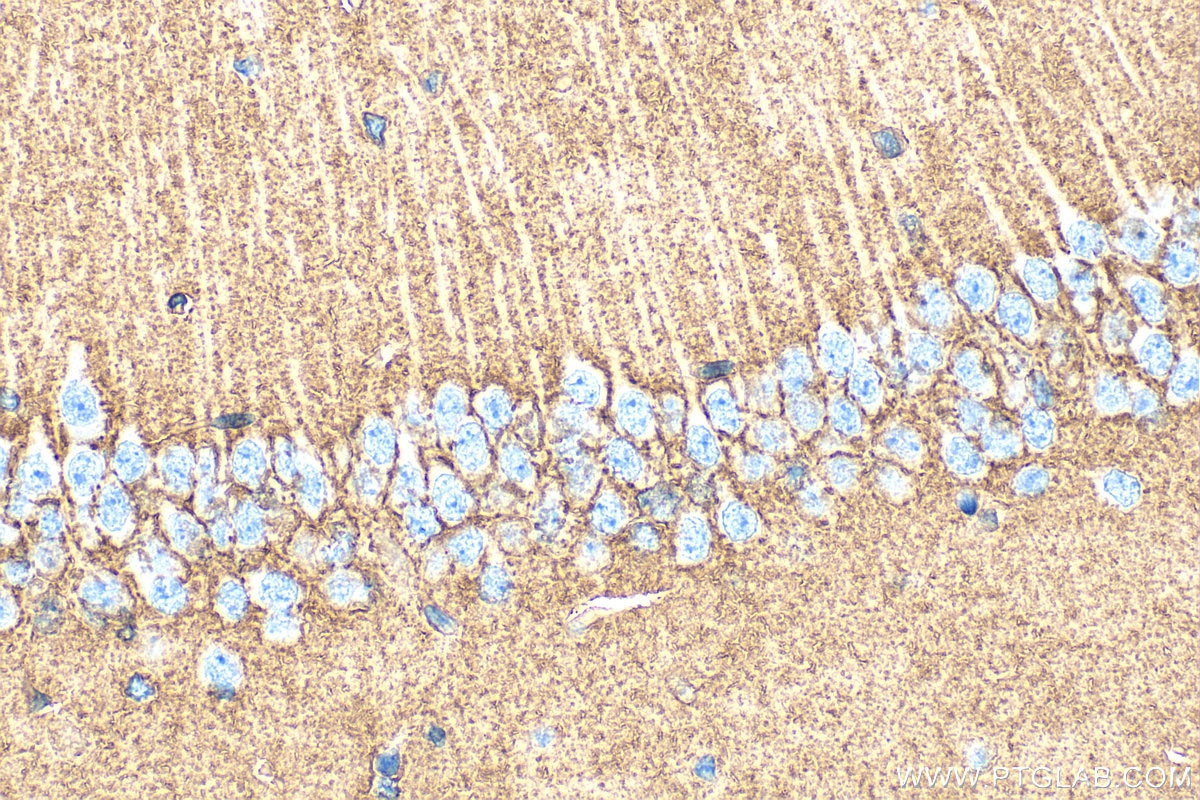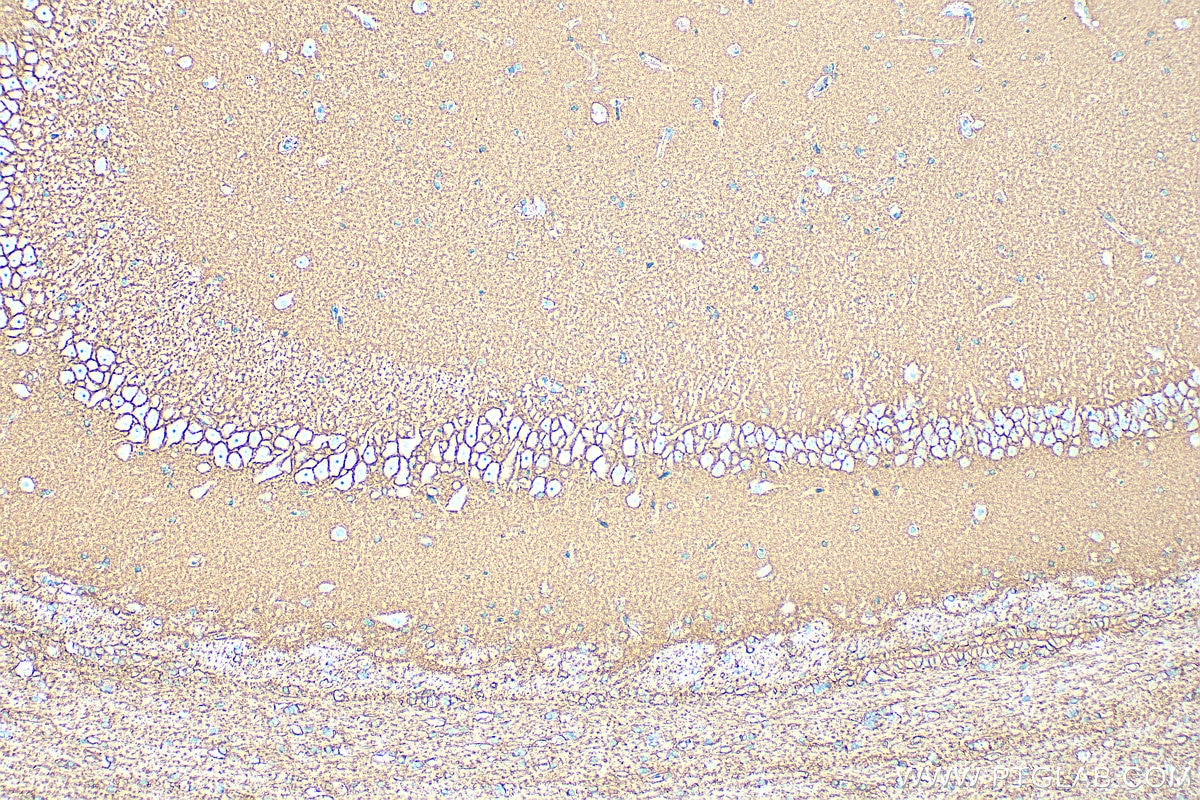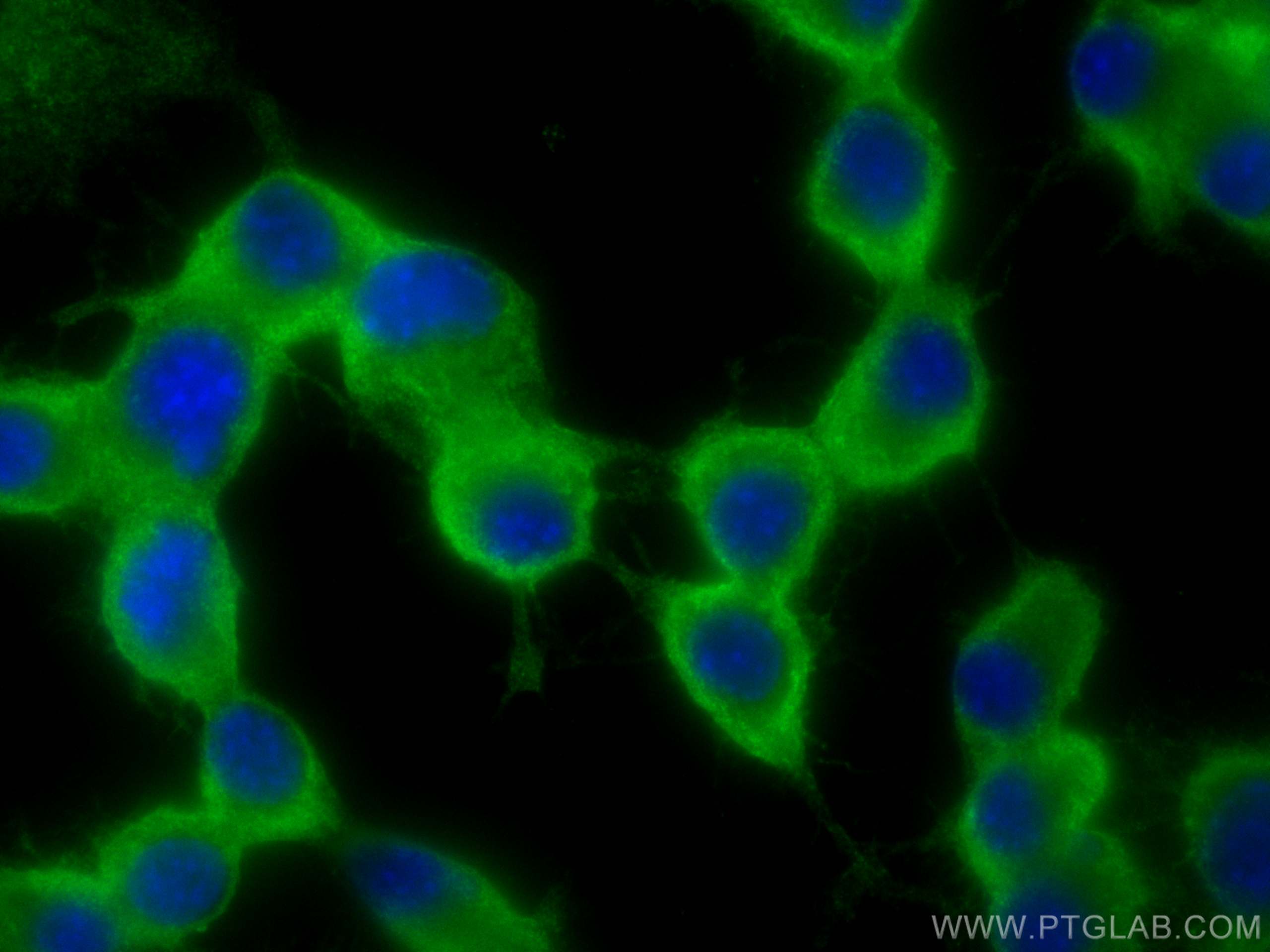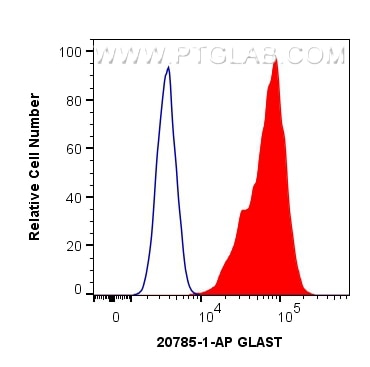- Featured Product
- KD/KO Validated
GLAST/EAAT1 Polyklonaler Antikörper
GLAST/EAAT1 Polyklonal Antikörper für WB, IHC, IF/ICC, FC (Intra), IP, ELISA
Wirt / Isotyp
Kaninchen / IgG
Getestete Reaktivität
human, Maus, Ratte und mehr (1)
Anwendung
WB, IHC, IF/ICC, FC (Intra), IP, CoIP, ELISA
Konjugation
Unkonjugiert
Kat-Nr. : 20785-1-AP
Synonyme
Geprüfte Anwendungen
| Erfolgreiche Detektion in WB | Neuro-2a-Zellen, C6-Zellen, Maushirngewebe |
| Erfolgreiche IP | Maushirngewebe |
| Erfolgreiche Detektion in IHC | Maushirngewebe, Rattenhirngewebe Hinweis: Antigendemaskierung mit TE-Puffer pH 9,0 empfohlen. (*) Wahlweise kann die Antigendemaskierung auch mit Citratpuffer pH 6,0 erfolgen. |
| Erfolgreiche Detektion in IF/ICC | Neuro-2a-Zellen |
| Erfolgreiche Detektion in FC (Intra) | Neuro-2a-Zellen |
Empfohlene Verdünnung
| Anwendung | Verdünnung |
|---|---|
| Western Blot (WB) | WB : 1:500-1:2000 |
| Immunpräzipitation (IP) | IP : 0.5-4.0 ug for 1.0-3.0 mg of total protein lysate |
| Immunhistochemie (IHC) | IHC : 1:200-1:800 |
| Immunfluoreszenz (IF)/ICC | IF/ICC : 1:200-1:800 |
| Durchflusszytometrie (FC) (INTRA) | FC (INTRA) : 0.40 ug per 10^6 cells in a 100 µl suspension |
| It is recommended that this reagent should be titrated in each testing system to obtain optimal results. | |
| Sample-dependent, check data in validation data gallery | |
Veröffentlichte Anwendungen
| KD/KO | See 1 publications below |
| WB | See 23 publications below |
| IHC | See 2 publications below |
| IF | See 11 publications below |
| IP | See 1 publications below |
| CoIP | See 1 publications below |
Produktinformation
20785-1-AP bindet in WB, IHC, IF/ICC, FC (Intra), IP, CoIP, ELISA GLAST/EAAT1 und zeigt Reaktivität mit human, Maus, Ratten
| Getestete Reaktivität | human, Maus, Ratte |
| In Publikationen genannte Reaktivität | human, Maus, Ratte, Kuh |
| Wirt / Isotyp | Kaninchen / IgG |
| Klonalität | Polyklonal |
| Typ | Antikörper |
| Immunogen | GLAST/EAAT1 fusion protein Ag14177 |
| Vollständiger Name | solute carrier family 1 (glial high affinity glutamate transporter), member 3 |
| Berechnetes Molekulargewicht | 542 aa, 60 kDa |
| Beobachtetes Molekulargewicht | 50-55 kDa, 90-100 kDa |
| GenBank-Zugangsnummer | BC037310 |
| Gene symbol | GLAST |
| Gene ID (NCBI) | 6507 |
| Konjugation | Unkonjugiert |
| Form | Liquid |
| Reinigungsmethode | Antigen-Affinitätsreinigung |
| Lagerungspuffer | PBS with 0.02% sodium azide and 50% glycerol |
| Lagerungsbedingungen | Bei -20°C lagern. Nach dem Versand ein Jahr lang stabil Aliquotieren ist bei -20oC Lagerung nicht notwendig. 20ul Größen enthalten 0,1% BSA. |
Hintergrundinformationen
SLC1A3, also known as EAAT-1 or GLAST, is a membrane-bound protein localized in glial cells and pre-synaptic glutamatergic nerve endings. It transports the excitatory neurotransmitters L-glutamate and D-aspartate, which is essential for terminating the postsynaptic acction of glutamate. Recently, a correlation between expression/function of glial EAAT-1 and tumor proliferation has been reported. The exceptionally rare expression of EAAT-1 in non-neoplastic choroid plexus (CP) compared to choroid plexus tumors (CPT) may distinguishes neoplastic from normal CP. There are a number of splicing variants of SLC1A3, like GLAST1a and GLAST1b, exist due to the exon skipping. It also undergo glycosylation. Variety of bands can be observed in the western blotting assay: 50-55 kDa represents the unglycosylated GLAST1a or GLAST1b, 65-70 kDa correspond to the glycosylated proteins, larger proteins between 90-130 kDa may be the multimers of SLC1A3. (11086157, 17471058, 12546822)
Protokolle
| PRODUKTSPEZIFISCHE PROTOKOLLE | |
|---|---|
| WB protocol for GLAST/EAAT1 antibody 20785-1-AP | Protokoll herunterladen |
| IF protocol for GLAST/EAAT1 antibody 20785-1-AP | Protokoll herunterladen |
| IP protocol for GLAST/EAAT1 antibody 20785-1-AP | Protokoll herunterladen |
| STANDARD-PROTOKOLLE | |
|---|---|
| Klicken Sie hier, um unsere Standardprotokolle anzuzeigen |
Publikationen
| Species | Application | Title |
|---|---|---|
Nucleic Acids Res H2A.Z.1 crosstalk with H3K56-acetylation controls gliogenesis through the transcription of folate receptor. | ||
Cell Rep SOX2 is essential for astrocyte maturation and its deletion leads to hyperactive behavior in mice | ||
Cell Death Differ RNF20 controls astrocytic differentiation through epigenetic regulation of STAT3 in the developing brain. | ||
J Neuroimmune Pharmacol Brain-Derived Exosomal CircRNAs in Plasma Serve as Diagnostic Biomarkers for Acute Ischemic Stroke | ||
Biochem Pharmacol Regulatory roles of histamine receptor in astrocytic glutamate clearance under conditions of increased glucose variability | ||
Neuropharmacology Ginsenoside Rb1 confers neuroprotection via promotion of glutamate transporters in a mouse model of Parkinson's disease. |
Rezensionen
The reviews below have been submitted by verified Proteintech customers who received an incentive for providing their feedback.
FH Ryan (Verified Customer) (02-14-2018) | NaCit antigen retrieval ph = 6
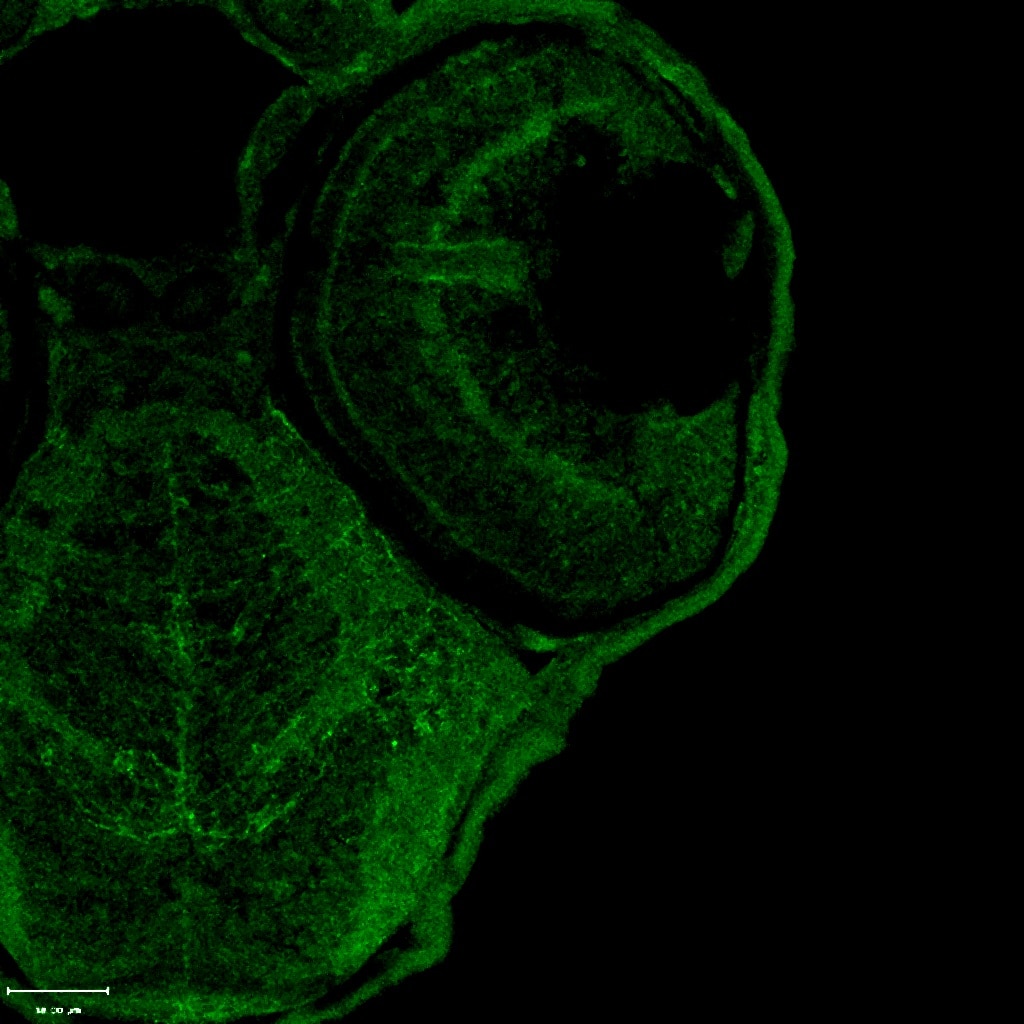 |
FH Ryan (Verified Customer) (01-24-2018) | Antigen retrieval - 0.1M Tris-HCl ph9
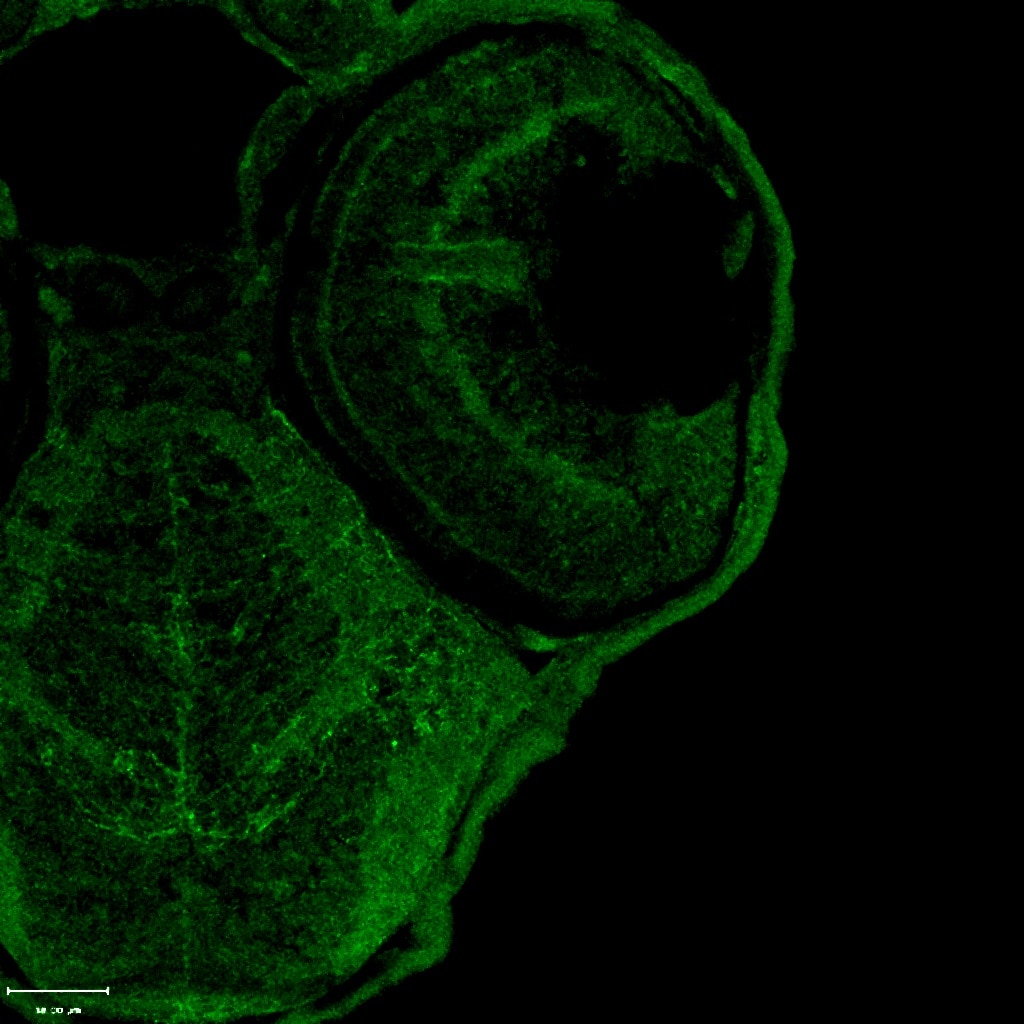 |
